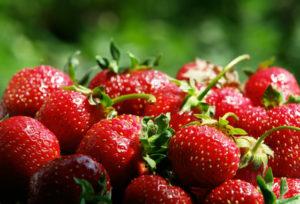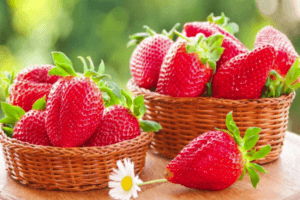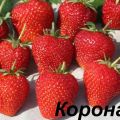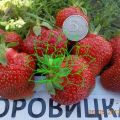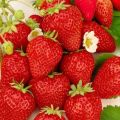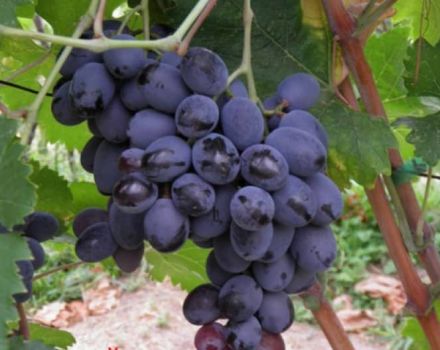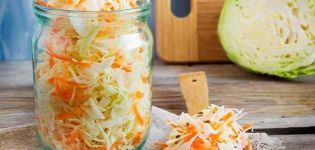Description and characteristics of strawberry varieties Pineapple, planting and care
Garden strawberries are grown in summer cottages and home gardens throughout the summer. Among the many varieties of garden berries, there are unusual varieties. A hybrid with a memorable taste and distinctive external characteristics is called Pineapple Strawberry.
Description and characteristics of the Pineapple variety
This variety became a cultigen after crossing wild varieties of Chilean and Virginia strawberries. In the wild, there are no analogues to these berries. The author of the selection selection is the Dutchman Hans de Jong. The cultivation of the variety began in the 18th century. Botanical description of the species:
- refers to the type of remontant and large-fruited;
- the height of the bushes reaches 20 centimeters;
- the average diameter of the berries reaches 2.5 centimeters;
- large dark green leaves form a wide rosette;
- inflorescences are collected at the tops;
- fruit color can vary from cream to pink;
- when ripe, the grains on the surface of the fruit acquire a red tint.
Berries can be sweet, sweet-sour, or moderately sweet. The variety has a pronounced aroma. For long-term storage, a shock freezing method is used to preserve the shape and useful properties of the culture.
Main advantages and disadvantages
The advantages of a variety are called the ability to withstand infections that often affect other varieties.
The peculiarity of Pineapple Strawberry lies in the shade that does not attract the attention of birds or small insects.
Pineapple strawberry bushes grow in one place for 4 or 5 years. At the same time, the stability of fruiting is maintained. The flowers of the culture retain the feminine principle, therefore, other varieties with male flowers are planted nearby for growth.
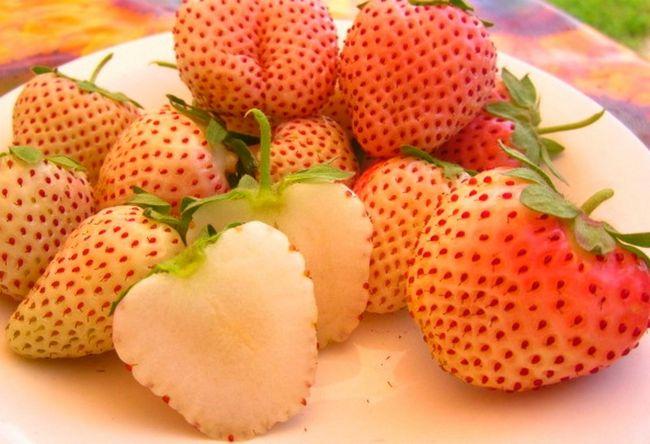
Cons of the variety:
- impossibility of reproduction by seeds;
- does not tolerate long-term storage, transportation;
- prone to rot with an abundance of watering.
Cultivation rules
Garden strawberries are among the most whimsical crops. Gardeners have to make a lot of effort to collect the planned harvest at the end of the fruiting period. Berry care includes the implementation of agronomic steps in strict sequence.

How to choose the right seedlings
Before planning plantings, you need to choose seedlings that quickly adapt and allow you to get a harvest of berries. The main criterion for choosing a healthy seedling is its appearance:
- developed root system, up to 7 centimeters long;
- the presence of green leaf plates (3 or 4 pieces);
- no damage, spots, rashes on the stem and leaves.
The roots of the seedling should be visible in the drainage holes if placed in peat bowls or other commercial containers.

Information! Elongated stems of seedlings are evidence of a lack of light, such a seedling will not take root well after planting.
When and where to plant a berry
Seedlings are planted in autumn or spring. Autumn planting will allow harvesting in the summer, and after spring planting, the fruits are harvested the next year. For planting, periods are suitable when the soil is warmed up to +18 or +20 degrees. Seedlings are planted early in the morning or late in the evening; a cloudy day without precipitation is suitable for the procedure.
The place for strawberries is chosen taking into account the sun's rays on the soil. Pineapple strawberries love the sun, so planting on the southern sides of the plots is fully justified. The place should be level. Fog often accumulates in the lowlands in the morning - this is not suitable for culture. In addition, it should be borne in mind that stagnant water is destructive for strawberries.
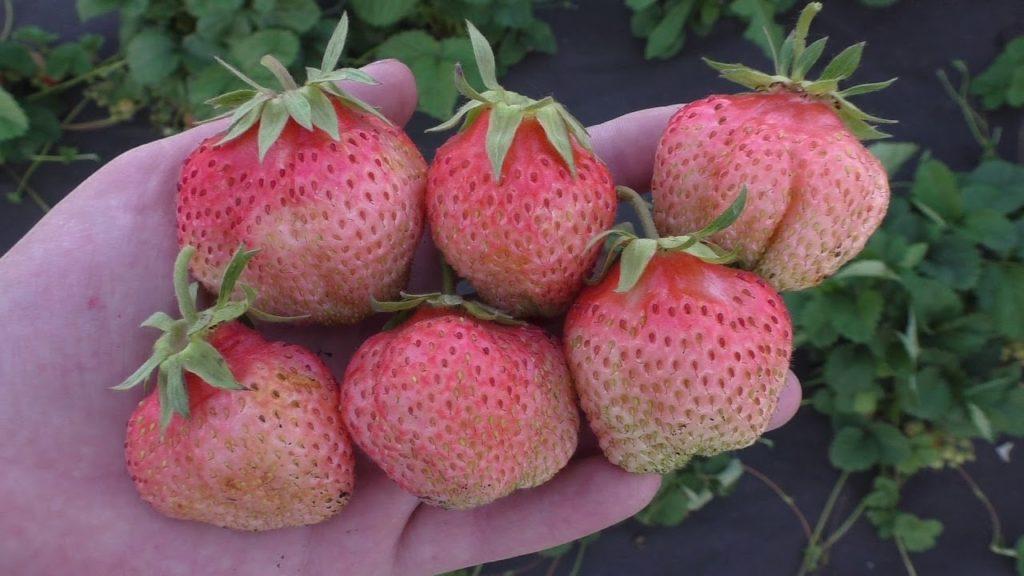
The acidity of the soil should be between 5 and 6.5 ph. Different types of soil are acceptable for the variety, but black soil with wood ash content is most suitable.
Open ground planting scheme
Before planting, the soil is prepared in advance. It is dug up, fertilized with nitrogen-containing complexes. Experienced gardeners advise to dig up the soil, sprinkling granules of ammonium nitrate on the surface. After that, the ground is covered with a film, this helps to normalize the acidity level.
Before direct disembarkation, dig holes. Their depth should not exceed double the size of the root system. The roots are straightened and carefully sprinkled with soil. The duration of the adaptation period depends on the integrity of the root system:
- deep planting can lead to root rot;
- shallow fit can cause freezing.
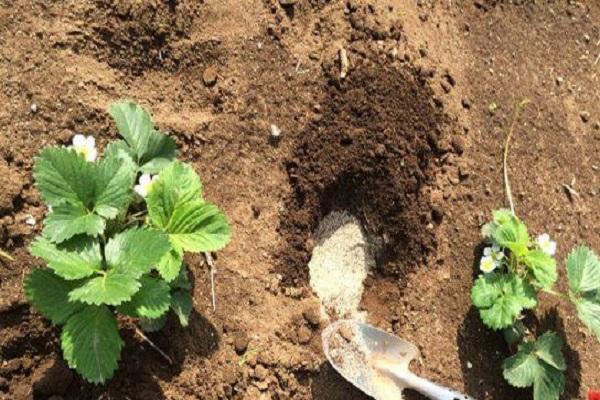
An important condition is the location of the apical bud above the ground. The root collar is placed at ground level.
The planting scheme depends on the place allocated for the strawberries. The main options are:
- in one line: between rows - 90 centimeters, between sockets - 20 centimeters;
- two-line: between rows - 70 centimeters, between bushes - 20 centimeters;
- in three lines: rows of strawberries are planted on 1 ridge, the distance between the outlets is 30 centimeters.
The nuances of caring for garden strawberries
After planting, an important stage of strawberry care begins. It includes the use of agrotechnical methods, on the correctness of which the future harvest depends.
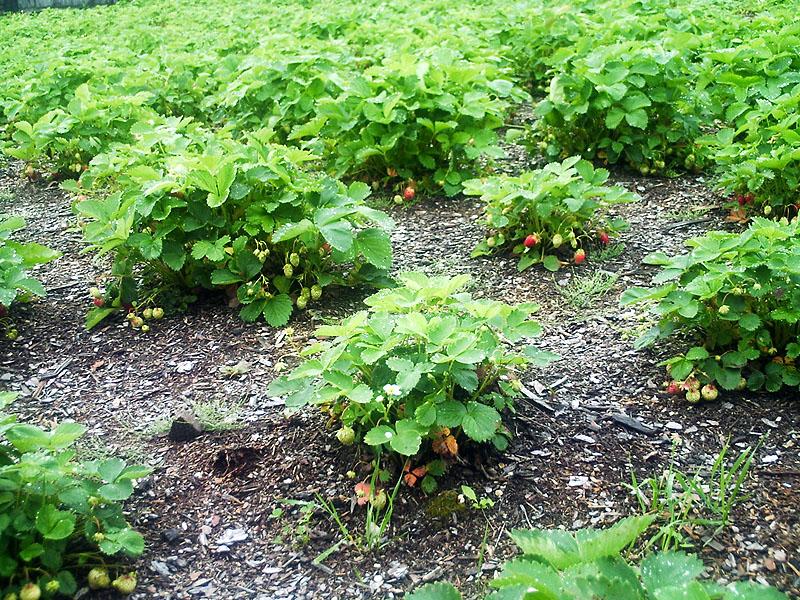
Watering, weeding and loosening the soil
Strawberry Pineapple needs frequent and regular watering, although waterlogging of the soil leads to the development of fungal diseases. That is why gardeners recommend adhering to the basic rules for watering:
- Before flowering bushes use the sprinkling method.
- After flowering and fruit formation, only root watering is used, without touching the leaves and fruits.
- Standing warm water is suitable for irrigation (cold water can damage the root system).
- In dry periods, the mulching method is used (it helps to retain moisture).
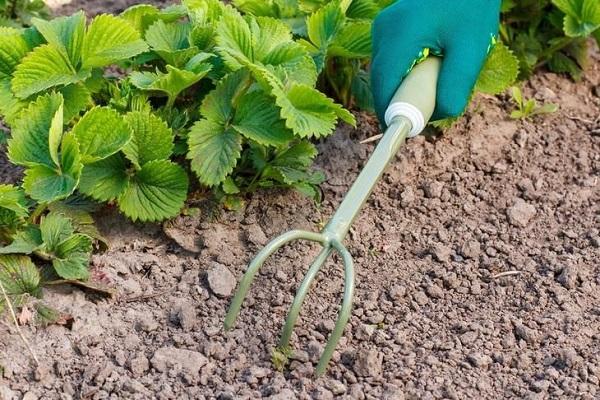
Loosening is necessary for strawberries after each abundant watering or rainfall. This contributes to the additional saturation of the root system with oxygen and inhibits the growth of weeds. The earth is loosened between the rows, as well as at a distance of at least 5 centimeters from the mother bush. At the same time, the depth of loosening is controlled so as not to damage the overgrown strawberry root system.
Weeding is planned depending on the condition of the soil. To avoid the multiplication of parasites, weeds are removed in a timely manner.
Fertilization
Top dressing is necessary for Pineapple strawberries during flowering and berry formation. For this, potassium-phosphorus mixtures are used. Exclusively root feeding is carried out without touching leaves or flowers.
Fertilize the soil with organic mixtures before planting. Use mullein, humus, or compost. Together with the planting, a small amount of wood ash is added to the holes. After harvesting, the bushes are fed with nitrogen-containing complexes.
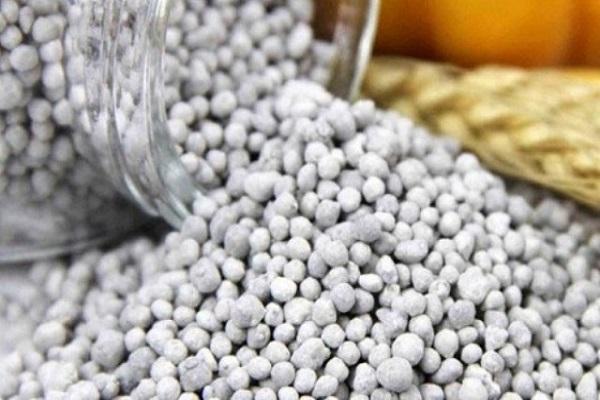
Mulching
Mulching, as an agricultural method, is of great importance for the culture. The advantages of using it:
- inhibiting the growth of weeds;
- protecting the soil from insects;
- moisture retention on dry days;
- protection from excessive exposure to sunlight during hot periods.
For mulching, straw, coniferous branches, cut grass are used. The choice of material depends on the weather and temperature conditions of the region.

Pruning mustache and leaves
With overgrowth of strawberries, yield indicators decrease. The main pruning is done after harvest, in the fall. The mustache and leaves are trimmed with a garden tool. The damaged and dried parts are selected. The mustache is cut at a distance of at least 10 centimeters from the base of the outlet. The leaves are not cut to the very root, so as not to violate the integrity of the stem.
From what and who needs to be protected?
The main danger for the Pineapple strawberry variety is a fungal infection called gray rot. It develops in the soil due to excess watering or rainfall. First, the root system is affected, and then the rot spreads to the stem and fruits. The fruits are covered with damp spots, which are especially noticeable on red varieties.
Measures to combat gray rot are considered the regulation of irrigation, correct mulching and compliance with crop rotation. Strawberries should not be planted after fruit trees, tomatoes, and melons.
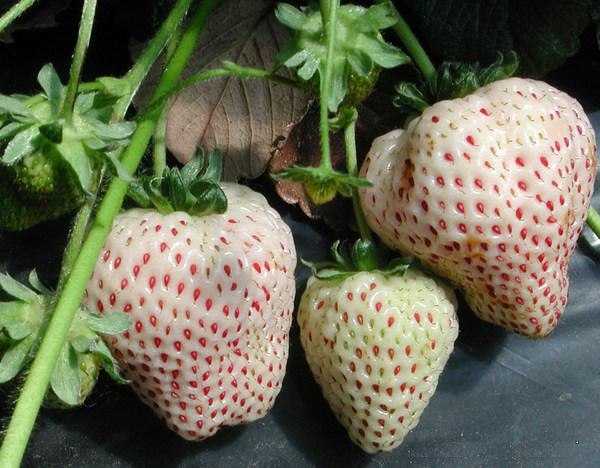
The strawberry variety often attracts the strawberry-raspberry weevil. It is a small black bug that is easy to spot on the plant. It appears on strawberries during the flowering period, its purpose is to destroy the buds. Before flowering in the regions where this parasite is most often found, preventive treatments are carried out. For this, chemicals are used. The folk method of processing leaves and buds with tobacco infusion helps to get rid of the beetle for several seasons.
Breeding types of varieties
The variety cannot be propagated by seed. Division is also not always suitable for this variety. The main method that gardeners choose is mustache reproduction.
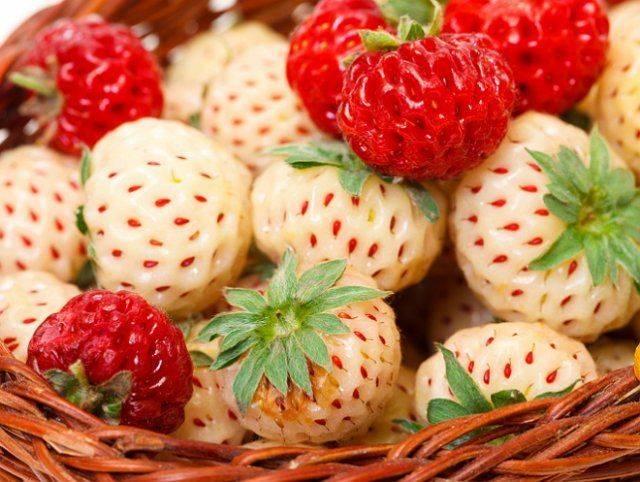
For this, large and dense shoots are instilled at a distance of 30 centimeters from the mother plant. During the summer, they take root and leave for the winter as independent bushes.
Cleaning and storing strawberries
After harvesting, the berry is prepared for wintering. In the fall, pre-winter watering is carried out. Moistened soil cools down more slowly, this gives time for the bushes to adapt in conditions of lower day and night temperatures. The bushes are covered with a special material if there is a chance of frost. In the southern regions, for wintering, it is enough to mulch the soil around the bushes with a layer of coniferous branches or sawdust.
Strawberries of this variety are not prone to long-term storage. It becomes watery and begins to rot on the side where it comes into contact with the container, so gardeners recommend processing or freezing it.
